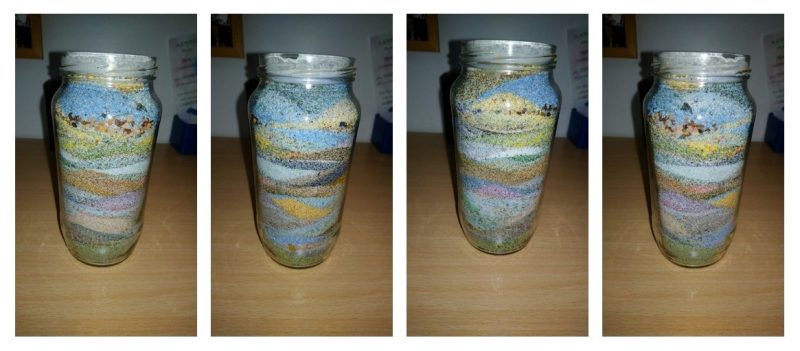This Salt pot is a wonderful example of how waste becomes art, in some cases. Over a period of two and a half years all the salt removed from my paintings went into this little pasta jar. Every time I use salt in the painting process, I must remove it. Otherwise the salt reacts and causes white lumpy areas on the paper. It also interferes with other effects, such as blown ink, and the direct application of the thicker inks. It’s therefore has to be removed and I use a lot of salt. Using my fingers mostly but a trowel shaped painting knife comes in handy for removing thicker patches. Sometimes the salt it’s like rubbing your fingers on sandpaper and the painting knife stops the blisters.
I used to throw away the salt, until I was working at a historic site and felt throwing large quantities of salt on their lawns wouldn’t be appreciated. I’d brought this jar with me for water, but hadn’t needed it. So the salt went in here. Over time, I realised that layers were forming, or they would if I didn’t shake it. It’s been fascinating watching it grow over the two and a half years and seeing the colours work together very subtly.
And just like that the Salt Pot waste becomes art.
Reminds me of those coloured sand souvenirs that you can buy on the Isle of Wight.

Sometimes I try and remember which paintings resulted in which layers. The bright green came from Fortnum and Mason. I think there’s a large orange/yellow clump from National Hisotry graffiti.Truth is, I can’t remember, but I can paintings I’ve done since whe the salt pot was used, see if you can guess which painting created which band.
Curious to see what other creations happen in my studio? I’d love to share my latest creations with you.




